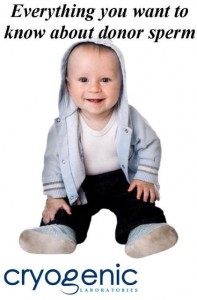Sperm cryopreservation and banking has become a widely accepted part of our culture. Once looked upon with uncertainty, this practice has proven time and time again to be a successful method of keeping the hope of a family alive for many men. The reasons for storage are as varied as men themselves. Sports figures and those in high-risk occupations protect their future against the chance that an injury could affect their reproductive health. Vasectomy patients often store sperm prior to their procedure in case they may one day choose to father another child. Patients undergoing cancer treatments are urged to store sperm prior to these procedures since radiation, chemotherapy or surgery may render them sterile. The reasons go on and on, but one thing is clear; more and more men are choosing to protect their future from the loss of fertility – and semen cryopreservation offers a proven measure of protection.
 As early as the 1940’s cattlebreeders and veterinarians had pretty much refined the process of cryopreserving bull semen and artificially inseminating heifers. It was obvious then, that the technology they were working with would be of great benefit to mankind. However it wasn’t until the 1950’s that the methods for cryopreserving human semen and artificial insemination were refined, resulting in the first human birth. Since then, careful ongoing research has aided in the development of more sophisticated procedures and techniques for the freezing and storing of human semen. Today, conservative estimates prove that more than 300,000 births have been achieved through artificial insemination with cryopreserved semen.
As early as the 1940’s cattlebreeders and veterinarians had pretty much refined the process of cryopreserving bull semen and artificially inseminating heifers. It was obvious then, that the technology they were working with would be of great benefit to mankind. However it wasn’t until the 1950’s that the methods for cryopreserving human semen and artificial insemination were refined, resulting in the first human birth. Since then, careful ongoing research has aided in the development of more sophisticated procedures and techniques for the freezing and storing of human semen. Today, conservative estimates prove that more than 300,000 births have been achieved through artificial insemination with cryopreserved semen.
So far, no limit has been established for how long human semen can be frozen when maintained and stored in appropriate liquid nitrogen storage. Cryogenic Laboratories has maintained cryopreserved human semen in storage for over 30 years and semen stored for 19 years has been used to achieve a pregnancy. Scientific literature shows conclusively that sperm motility, viability and morphology are not affected by proper long term cryopreservation.
“The technology of assisted reproductive techniques (ART) in recent years has progressed at a tremendous pace. Today, cryopreservation of sperm with subsequent ART can provide most post-therapy infertile cancer patients an opportunity to father children. Men who once had little or no chance of producing a pregnancy through assisted techniques due to poor” semen quality now have fertility rates approaching that of couples undergoing standard IVF when there is no male infertility involved. As a result, cryopreservation of sperm should be attempted before therapy by all men who may want to father children in the future.”



